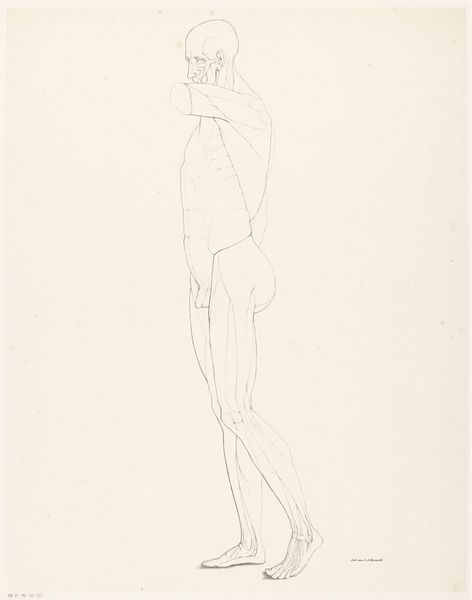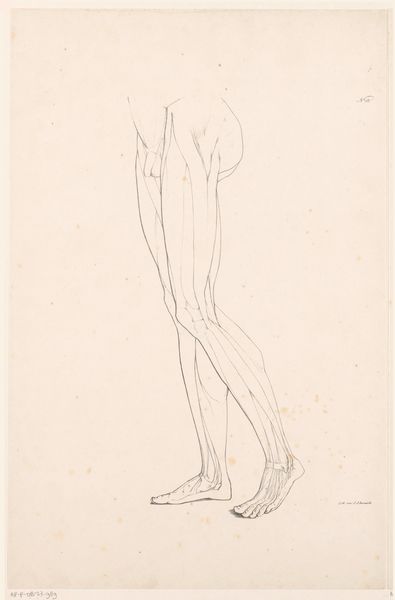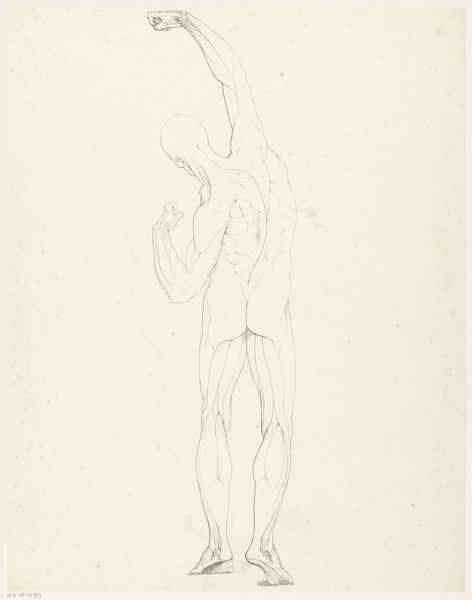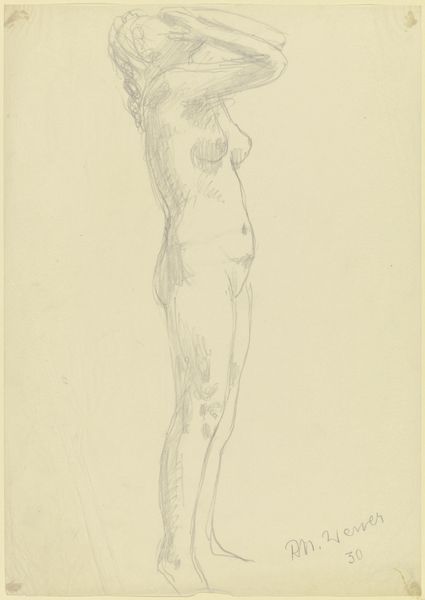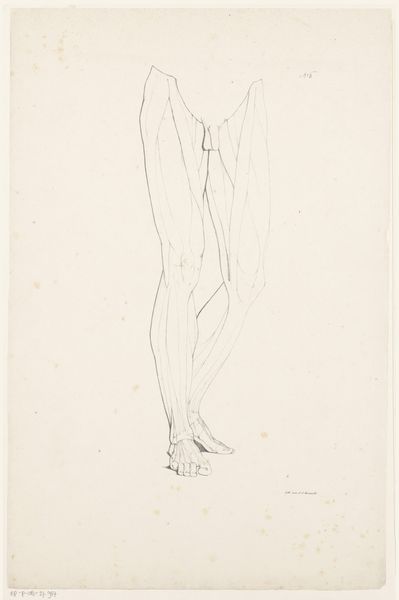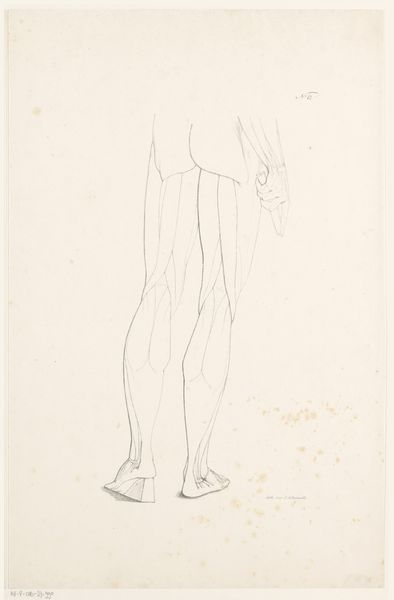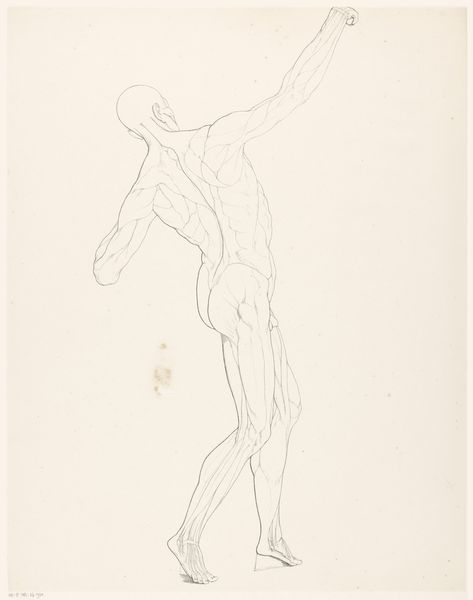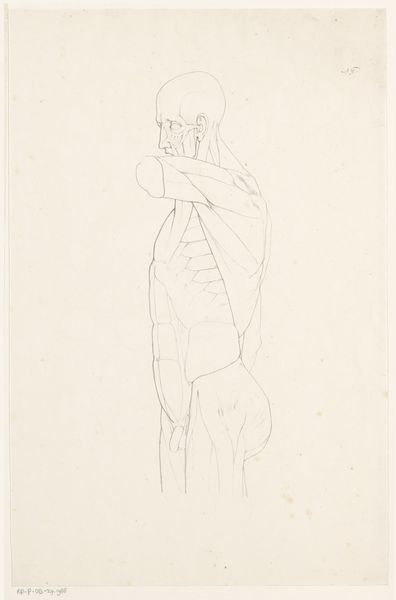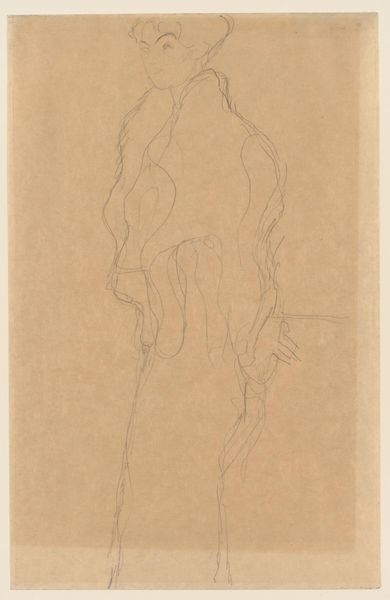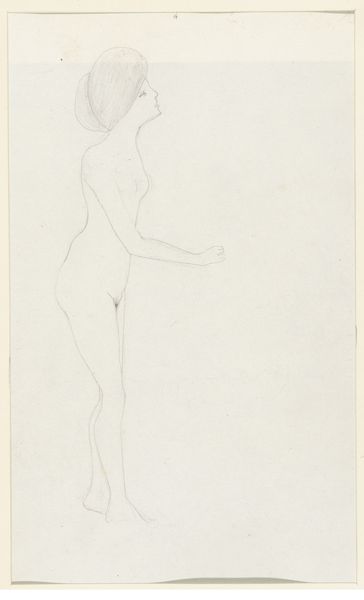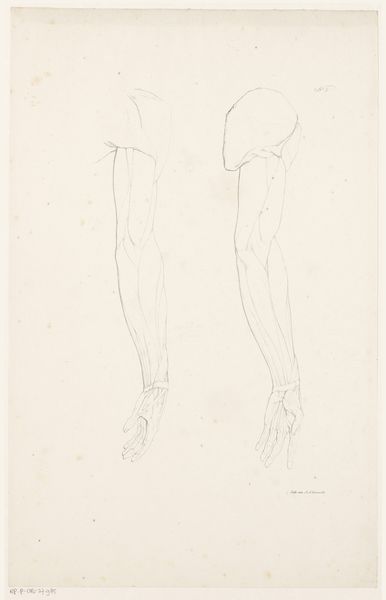
drawing, pencil
#
portrait
#
drawing
#
pencil sketch
#
classical-realism
#
figuration
#
pencil
#
pencil work
#
academic-art
Dimensions: height 545 mm, width 425 mm
Copyright: Rijks Museum: Open Domain
Editor: This drawing, "Tekenvoorbeeld van een écorché op de rug gezien," created between 1820 and 1833 by Jean Augustin Daiwaille, showcases a flayed figure's back in delicate pencil lines. It has this sterile quality to it, clinical almost. What can you tell me about it? Curator: I see this drawing not just as a clinical study, but as an artifact reflecting the evolving social context of artistic training. Note the material economy at play. Pencil, paper: relatively inexpensive and readily available. The creation of such studies allowed for a wider access to anatomical knowledge. How does the use of drawing, specifically, impact our understanding of anatomical study as a form of labor and production? Editor: That’s interesting. It makes it seem less like high art and more like…work. A skilled craftsman learning their trade? Curator: Precisely. Consider the labor invested. Each line represents a conscious decision, a translation of observed anatomy into a reproducible format. The drawing functions almost as a manual, showcasing how artistic knowledge was disseminated and consumed. Academic art emphasized this process. Think about it. What kind of market or commission did it have? Was it reproduced by others, for instance in textbooks? Editor: I suppose it democratizes artistic knowledge, making it less precious by moving it out of the master’s studio. But doesn’t that devalue the skill involved? Curator: Not necessarily devalue, but redistribute. Skill becomes less about individual genius and more about mastering a standardized technique accessible through materials and repeated exercises. What boundaries are being tested when craft becomes art, and art disseminates knowledge? Editor: So it becomes a conversation about skill versus concept, production versus individual expression…It's far more complex than just a sketch of muscles! Curator: Exactly. Looking at art through a materialist lens shifts the focus from solely aesthetic value to broader questions about social and economic forces shaping its creation and reception.
Comments
No comments
Be the first to comment and join the conversation on the ultimate creative platform.
